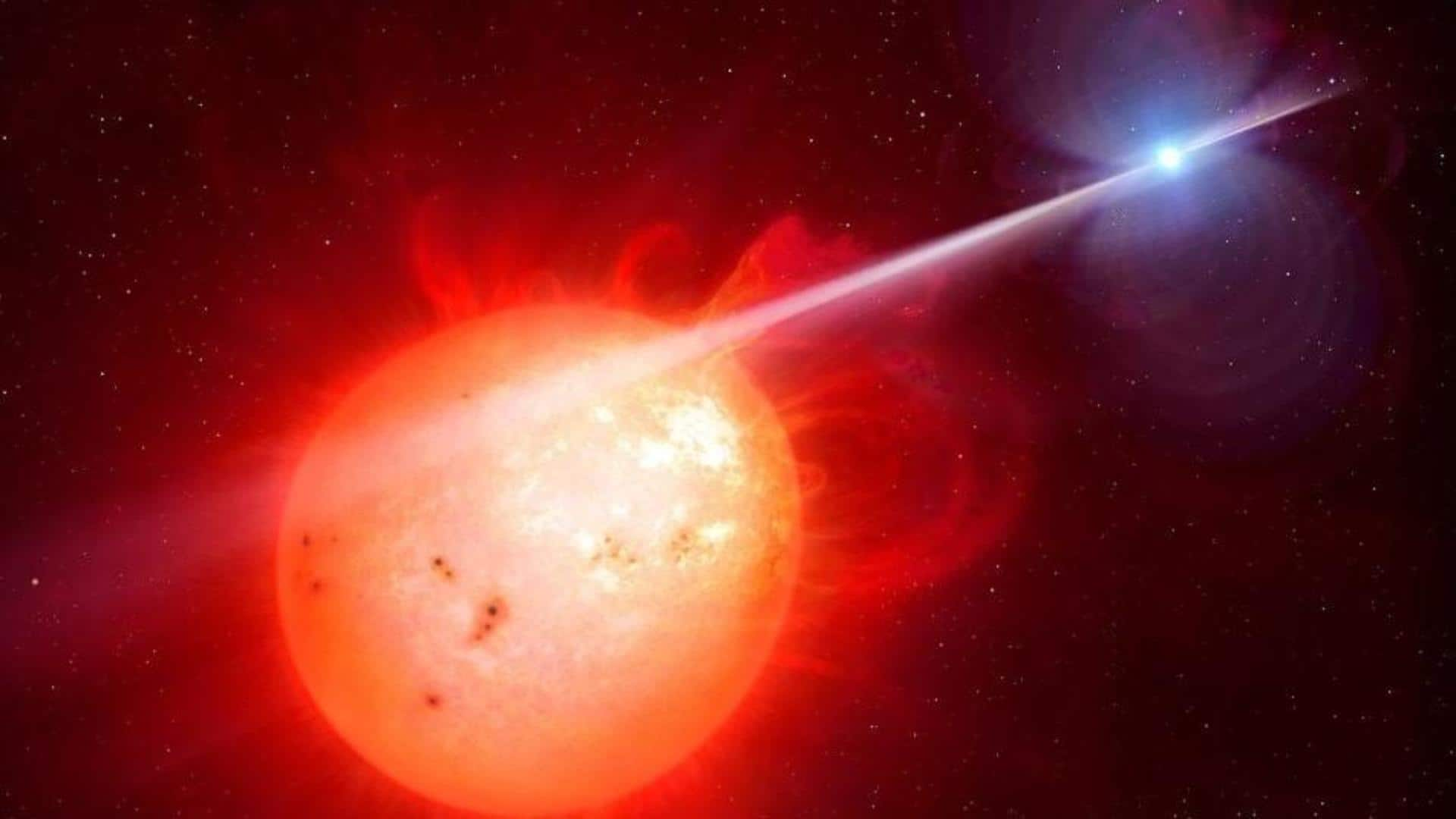
Discovery of second-ever white dwarf pulsar explains how stars evolve
What's the story
New research, led by the University of Warwick, has led to the discovery of what's only the second example of a white dwarf pulsar. The newly discovered white dwarf, dubbed J191213.72-441045.1 (J1912-4410), lies about 773 light-years from Earth. It is part of a binary star system, accompanied by a red dwarf star. The findings provide insights into the evolution of stars.
Detail
First, what are white dwarfs?
White dwarfs can be thought of as stellar remnants. They form when stars of low mass exhaust their nuclear fuel and shed their outer layers. White dwarfs are also referred to as "stellar fossils." Typically, these cosmic objects, which measure the size of the Earth, have masses similar to that of the Sun and are known to spin extremely fast.
Spin
J1912-4410 spins 300 times faster than Earth
Coming to J1912-4410, the white dwarf pulsar spins about 300 times faster than the Earth. As the pulsar spins, it releases powerful pulses of electrical particles and radiation at its accompanying red dwarf star. This causes the system to dim and brighten dramatically over regular periods. Scientists aren't entirely sure what causes this activity but theorize it could be because of strong magnetic fields.
Explanation
Why do white dwarf pulsars lash out powerful electrical pulses?
One key explanation for why white dwarf pulsars expel powerful beams is the "dynamo" model. It suggests these objects have dynamos or electrical generators at their core—similar to the one that Earth has—but way more powerful. By looking at J1912-4410, astronomers could confirm if their predictions about pulsar activity are true. Further, this could shed light on stellar evolution.
Finding
J1912-4410 is the second known example of white dwarf pulsar
J1912-4410 is believed to complete a rotation on its axis about once every five minutes. The magnetic field expulsions are the reason behind the bursts of radio and X-ray radiation observable from the system. J1912-4410 is the second-ever white dwarf pulsar known to mankind. The first such system was discovered in 2016 and is called AR Scorpii (AR Sco).
Official words
'The origin of magnetic fields is a big open question'
"The origin of magnetic fields is a big open question in many fields of astronomy, and this is particularly true for white dwarf stars," said Ingrid Pelisoli, the study's lead author "The magnetic fields in white dwarfs can be more than a million times stronger than the magnetic field of the Sun, and the dynamo model helps to explain why."